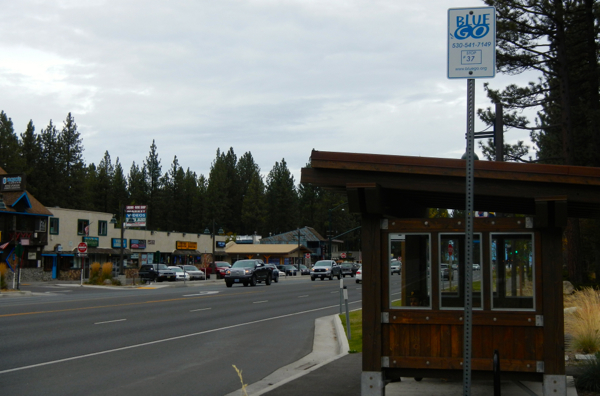Public: Transit on South Shore failing riders
By Kathryn Reed
Public transportation on the South Shore is a nightmare that is not serving those who need it most.
That was the message delivered by nearly two dozen people on Sept. 30 to Tahoe Regional Planning Agency and Tahoe Transportation District personnel. The purpose of the meeting was to gather information about unmet transit needs.
When asked what happens after Wednesday’s meeting, Judy Weber, TRPA associate transportation planner, said a report would be written. Then it would be decided what short- and long-range items, if any, could be tackled. Short range was defined as up to five years.
Basically, the workshop was convened to mark off an obligation of the bi-state agency’s transportation protocols.
El Dorado County Supervisor Sue Novasel joined the meeting an hour after it started and just before it ended. She is on the TTD board, but said she didn’t know about the meeting until someone at the Soroptimist gathering that day asked her about it.
Some in the room, especially those associated with the Kelly Ridge housing complex, said they might not be around in five years if that’s how long it takes for change to happen.
An obstacle to getting anything done is money.
Weber said the BlueGo bus system on the South Shore is now almost exclusively funded by the federal government via pass-throughs to California and Nevada. Douglas County puts in money. Vail Resorts pays TTD to provide free bus service to Heavenly Mountain Resort on certain routes – mainly the ones servicing lodging properties. There was a time when South Lake Tahoe, El Dorado County, the casinos and Ridge Tahoe supported the bus system.
The Kelly Ridge residents and administration wonder why the bus stop that used to be outside the South Lake Tahoe senior-disabled housing complex was eliminated.
Lake Tahoe Community College students and faculty asked why a bus services the South Lake Tahoe institution every other hour instead of more often.
The on-demand service is unreliable, many said. They added that it is expensive.

Garry Bowen, top right, asks why maps can’t be created for the bus shelters so people know where each line goes.
Others expressed concerns about inconsistent schedules.
It was pointed out that tourists could get from Stateline to the Y, but that the trolley then only goes a short way past Emerald Bay. Plus, the time to transfer is extremely short. There is no opportunity to access the beaches in Nevada via public transit.
Some wanted to know why something like the East Shore Express in Incline Village isn’t used on the South Shore to provide access to beaches.
Several asked about creating a transfer program.
Meyers doesn’t even have public transit anymore. Getting to Reno is not easy. Bus service is not available 24 hours even though this is a 24-hour community. Additional buses are not added during peak hours or days.
Tapping into Lake Tahoe Unified’s well-oiled bus system was broached.
Others wanted to know why some bus shelters are covered and other are not, as well as why some have seats and some don’t.
Bus stops don’t have their name on them. Routes are not listed at the stops. Schedules aren’t at the stops and not all buses have them on board. The signs just say BlueGo – not even bus. For those who don’t know what a BlueGo is, it makes it even more difficult. Then there is the fact that more buses are coming online that don’t say BlueGo; they say Tahoe Transportation District.
The result of a bus system that does not meet riders’ needs is that it is pushing people into vehicles – which goes against TRPA’s air and water quality thresholds.

